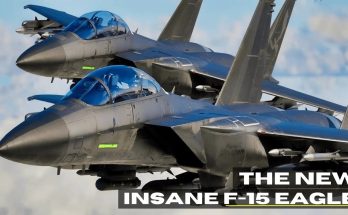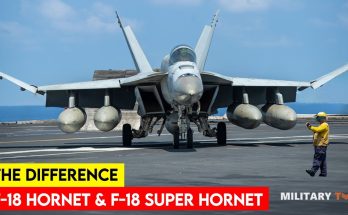What’s New in F-16 Block 70/72: Latest Variant of F-16 Features
The F-16 Fighting Falcon has long been a cornerstone of air forces worldwide, renowned for its versatility, agility, and cost-effectiveness. With decades of service, the F-16 continues to evolve, and the latest iteration, the F-16 Block 70/72, brings cutting-edge advancements to this legendary multirole fighter. The Block 70/72 represents the most advanced version of the F-16 yet, with a host of new features that enhance its combat capability, survivability, and adaptability in modern warfare.
Key Features of the F-16 Block 70/72
-
Advanced Radar System: AN/APG-83 SABR One of the standout features of the F-16 Block 70/72 is its new radar system. It comes equipped with the AN/APG-83 Scalable Agile Beam Radar (SABR), a latest-generation active electronically scanned array (AESA) radar. This radar provides significant improvements in range, target detection, and tracking capability over older radar systems. The SABR offers superior performance in high-threat environments, such as against stealth targets and jamming. It enhances the F-16’s ability to detect, track, and engage multiple targets simultaneously, improving its overall combat effectiveness.
-
Enhanced Cockpit with New Avionics The Block 70/72 features a modernized cockpit, complete with a new glass cockpit display that enhances pilot situational awareness. The large-area display (LAD) provides more information in an intuitive layout, reducing pilot workload. The cockpit also incorporates digital avionics and a wide-area touchscreen display that allows pilots to interact with their flight systems more easily. The new avionics suite improves navigation, targeting, and weapons control, making the F-16 Block 70/72 an even more capable multirole fighter.
-
Improved Engine: Pratt & Whitney F100-PW-229 The F-16 Block 70/72 is powered by the advanced Pratt & Whitney F100-PW-229 engine, which offers improved fuel efficiency, thrust, and reliability compared to earlier engines. The engine delivers greater acceleration and better climb performance, ensuring that the fighter can perform in a variety of mission profiles with ease. This engine upgrade also improves the overall operational range and mission endurance, allowing the F-16 to stay in the fight for longer periods without compromising on performance.
-
Multirole Capability and Precision Strike As with earlier models, the Block 70/72 retains its multirole versatility. However, it brings enhanced precision strike capabilities with integration for newer weapons and systems. The aircraft supports a wide array of munitions, including precision-guided bombs (GBU-39 SDB, GBU-12, etc.), air-to-air missiles (AIM-120 AMRAAM, AIM-9X Sidewinder), and air-to-ground missiles. This variant is fully compatible with next-gen munitions, ensuring that the F-16 Block 70/72 remains effective in both air superiority and close air support missions, even in complex modern battlefields.
-
Increased Survivability: Electronic Warfare (EW) Systems The Block 70/72 comes with upgraded electronic warfare (EW) systems designed to enhance its survivability in high-threat environments. The aircraft is equipped with advanced countermeasures and jamming systems that enable it to operate in heavily contested airspaces. This includes the integration of the AN/ALQ-213 Electronic Warfare Management System, which enhances the F-16’s ability to avoid detection and counter adversarial threats, particularly in electronic warfare scenarios. These features make the F-16 Block 70/72 much harder to target by enemy radar and missiles.
-
Extended Service Life: Structural Upgrades One of the biggest advantages of the F-16 Block 70/72 is the extended service life. The airframe has undergone structural enhancements to ensure that it can operate effectively for many years to come, with an expected service life of up to 12,000 flight hours. These upgrades include reinforced structures and improved fatigue resistance, allowing the aircraft to handle the stresses of modern air combat without compromising its lifespan.
-
Upgraded Mission Systems Integration The Block 70/72 is designed with greater flexibility in integrating mission systems. It is compatible with the latest data links for seamless communication with other platforms, ensuring that the F-16 can operate as part of a networked force. Whether in multinational exercises or joint missions, this capability allows for faster, more coordinated responses to threats. Additionally, the Block 70/72 can easily integrate new mission systems as they become available, allowing the aircraft to remain relevant and adaptable in an ever-changing battlefield.
-
Improved Maintainability The F-16 Block 70/72 is designed with improved maintainability in mind, reducing downtime and enhancing operational availability. The aircraft’s modular design and improved maintenance procedures allow for faster turnaround times and easier upgrades. This also reduces the cost of ownership over the long term, making it a more attractive option for air forces seeking to maximize operational readiness.
-
Advanced Data Links and Connectivity The F-16 Block 70/72 is equipped with advanced data-link capabilities, such as the Link 16 system, allowing it to share real-time data with other aircraft, ground forces, and command centers. This connectivity enables better coordination and faster decision-making during complex operations, ensuring that the F-16 can operate effectively as part of a larger integrated defense network. The aircraft’s network-centric warfare capabilities allow it to interact seamlessly with newer platforms, including F-35s and unmanned aerial systems (UAS).
Global Appeal and Versatility
The F-16 Block 70/72 is quickly becoming a preferred choice for many nations around the world looking for a capable, cost-effective solution to meet their air defense needs. It provides cutting-edge technology and multirole versatility at a price point lower than newer, more expensive platforms like the F-35. Its ability to perform a wide range of missions—from air superiority to precision strike and close air support—makes it an attractive option for both developed and emerging defense markets.
Conclusion
The F-16 Block 70/72 is an exciting new chapter in the F-16’s legendary service history. With significant upgrades in radar, avionics, engine performance, weapons capabilities, and survivability, it is set to remain a crucial part of many air forces for years to come. As it continues to evolve, the F-16 Block 70/72 proves that the F-16 Fighting Falcon is far from outdated, adapting to meet the challenges of modern warfare and solidifying its reputation as one of the most capable and reliable fighter jets ever built.



